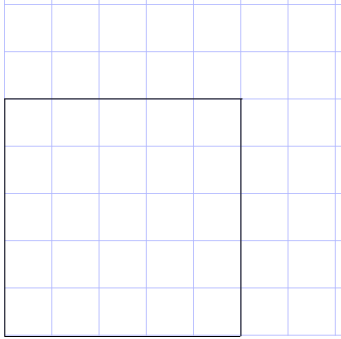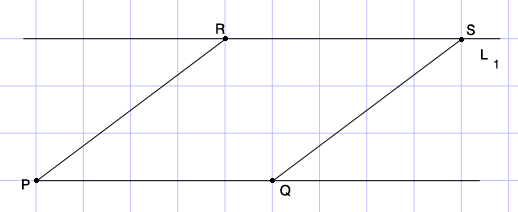| |||
| Math Central | Quandaries & Queries |
|
Question from shubham, a student: Why is the area of square not conserved when it changes to rhombus, both have equal sides still rhombus have less area than square.?? |
Hi Shubham,
First print a copy of one centimeter graph paper. Here is a printable copy.
Step 1.
Starting at one corner of the graph paper draw a square which is 5 cm by 5 cm.
If you count the square you will see that the 5 by 5 square covers 25 of the 1 centimeter squares. Thus the area of the 5 by 5 square is 25 square centimeters.
Step 2.
Starting at $P$ an intersection of the grid line in a different place on the graph paper draw along the horizontal grid line to a point $Q,$ 5 centimeters from $P.$ Draw the line $L_{1},$ 3 centimeters above the line segment $PQ.$ Using a ruler find the point $R$ on $L_1$ which is 5 centimeters from $P.$ Again with a ruler find the point $S$ on $L_1$ which is 5 centimeters from $R.$ If you did this carefully you will find that the line segment $QS$ has length 5 centimeters.
How many 1 centimeter squares are covered by the rhombus $PQSR?$ You can count the number of complete 1 centimeter squares covered and then match up the partial squares to obtain the number covered. This is the area of the rhombus in square centimeters.
Step 3.
Repeat step 2 with the line $L_1$ one centimeter above $PQ.$
What is the area of this rhombus?
The point I hope you see is that the area of the rhombus $PQSR$ depends on the lengths of the edges and also the shape. The smaller the angle $RPQ$ the smaller the area.
I hope this helps,
Penny
 |
||
Math Central is supported by the University of Regina and the Imperial Oil Foundation.


